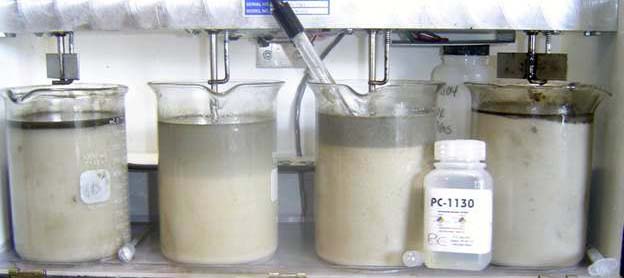
Whoever said that "oil and water don't mix" never treated industrial wastewater. Oils can become mixed in wastewater, and the way it's treated varies based on the oil and water mixture. Most local POTWs have Fats Oil and Grease (FOG) discharge limits in place, so manufacturers who have oil in their water have to address it before discharging. Oil has two basic forms in wastewater:
- Non-emulsified: Oil that floats on the surface of the water and is more easily removed before wastewater treatment.
- Emulsified: Oil that was subjected to chemical or mechanical action and dispersed into the water. It does not float on the surface and requires more sophisticated techniques for removal before wastewater treatment.
Treating non-emulsified oil
Non-emulsified oil can be removed from water by skimming or an oil water separator. Skimming can be done at the source by "skimming off" the oil over a tank weir. An oil water separator can be as simple as feeding the water into a storage tank with an exit pipe placed a short distance below the top of the tank. This allows the oil to be decanted from water. There are many kinds of oil water separators. Each has their own idiosyncrasies but all accomplish the same goal. Some of these are:
- Tube skimmers
- Belt skimmers
- Disc skimmers
Treating emulsified oil
Emulsified oil can be removed by decantation and skimming as well, as long as it is separated from the water first. This usually requires chemical processing, depending on the types of oils. Here are a few methods for separating oil from water using chemical processing:
- Lower the pH to the acidic side, and add metal-based coagulant.
- Raise the pH to neutral/alkaline, and add metal-based coagulant.
- Add a chemical de-emulsifier.
- Use any of the preceding without metal-based coagulant.
Following the chemical processing, the water can be treated using an oil water separator method (as with non-emulsified oil). Emulsified oil can also be treated without chemically pre-treating and without use of oil water separator, by using physical/filtration methods such as:
- Membrane filtration
- Activated carbon
- Clay based materials
- Evaporation/distillation
In all of these instances, the separated oil should be evaluated for moisture content to determine if it can be reused. If it can be reused, there are many companies that will actually pay you for this resource and haul it off at their expense. Once the majority of the oil is removed, it can then be chemically treated to remove other metals and solids by using a process like this:
- Lower the pH to 3.5 (if not already there).
- Dose with organic coagulant.
- Raise the pH to 9.0 - 10.0.
- Add an ionic polymer to produce floc.
In some cases, emulsified oil might be present in low enough concentrations that pretreating it with a separator is unnecessary. Other times, pretreatment may not be rigorous enough to remove all emulsified oil. In both cases, it may be possible to utilize an organic coagulant to remove oil during chemical treatment for removal of metals and solids. Such a process looks like this:
- Lower the pH to 3.5 (if not already there).
- Dose with inorganic coagulant.
- Raise the pH to 9.0. - 10.0.
- Dose with organic coagulant.
- Add an ionic polymer to produce floc.
Water and oil do mix, and treating water containing oil can be accomplished using various methods, depending upon the form, type, and concentration of oil. Contact ProChem by clicking Contact Us to help you determine the best treatment method for your wastewater.
ProChem strives to help their customers establish the highest level of credibility and a positive reputation within the regulatory community. Their goal is to significantly reduce the amount of fresh water that manufacturers require by providing sustainable solutions that will also benefit the customer’s bottom line.
